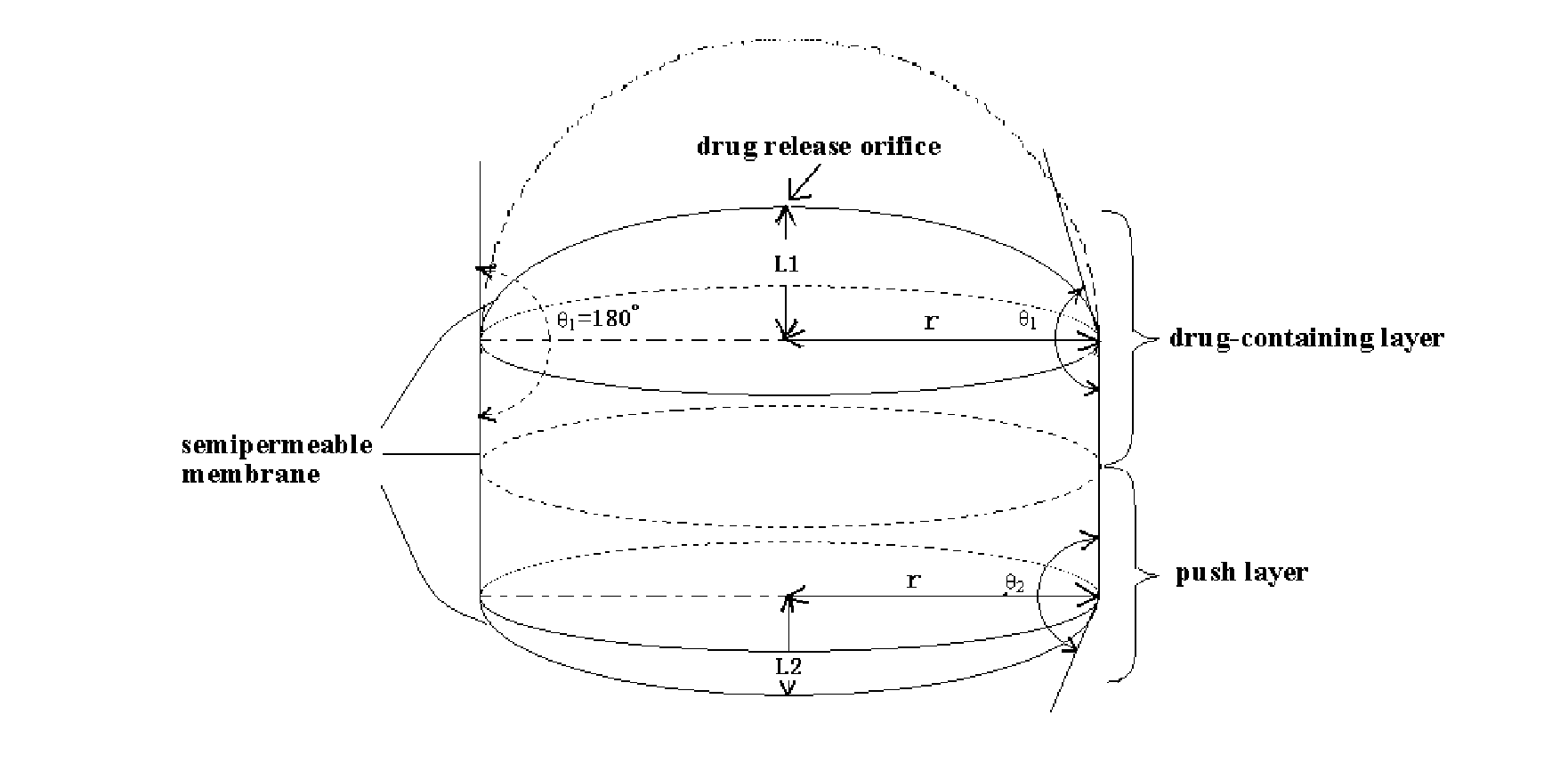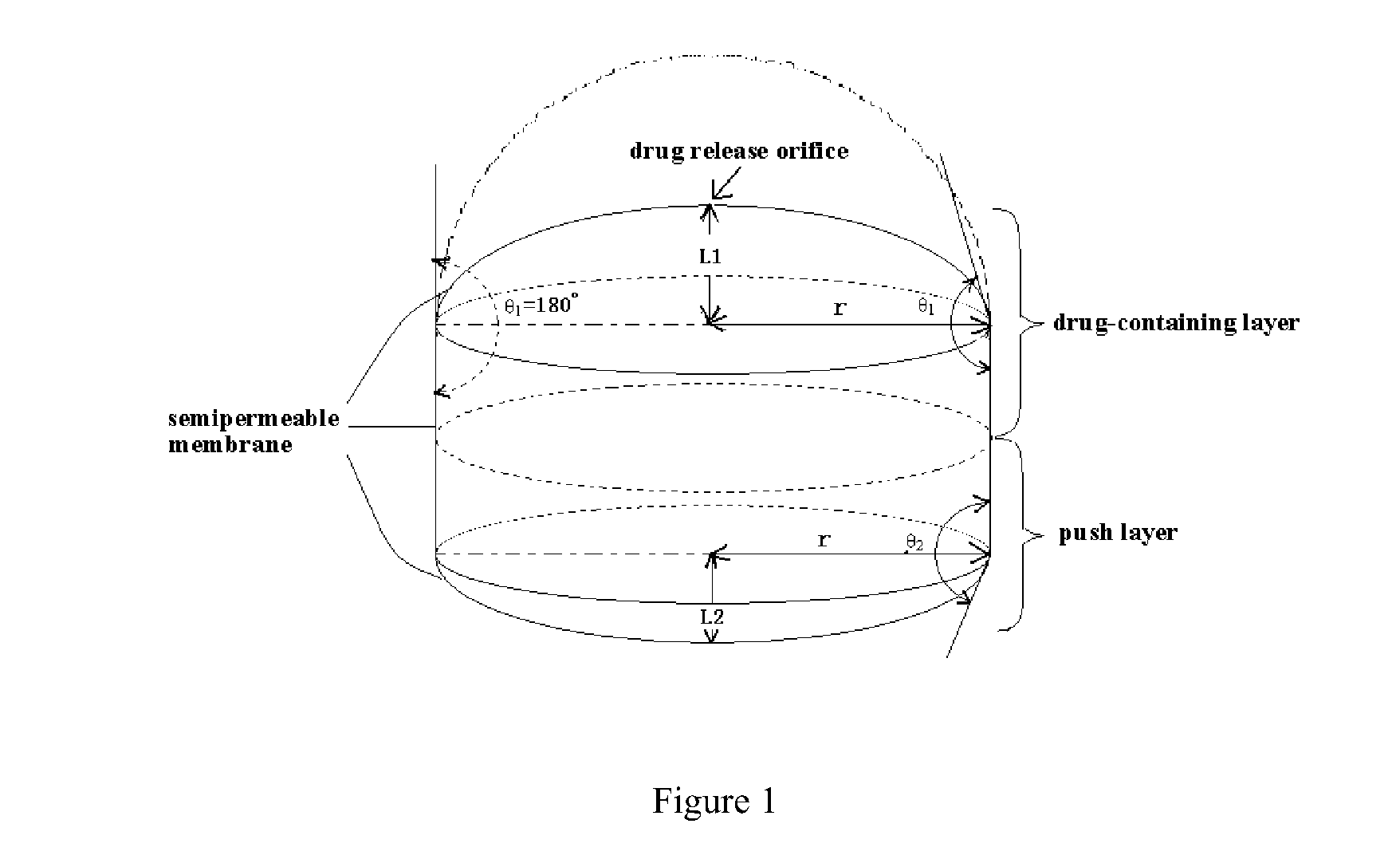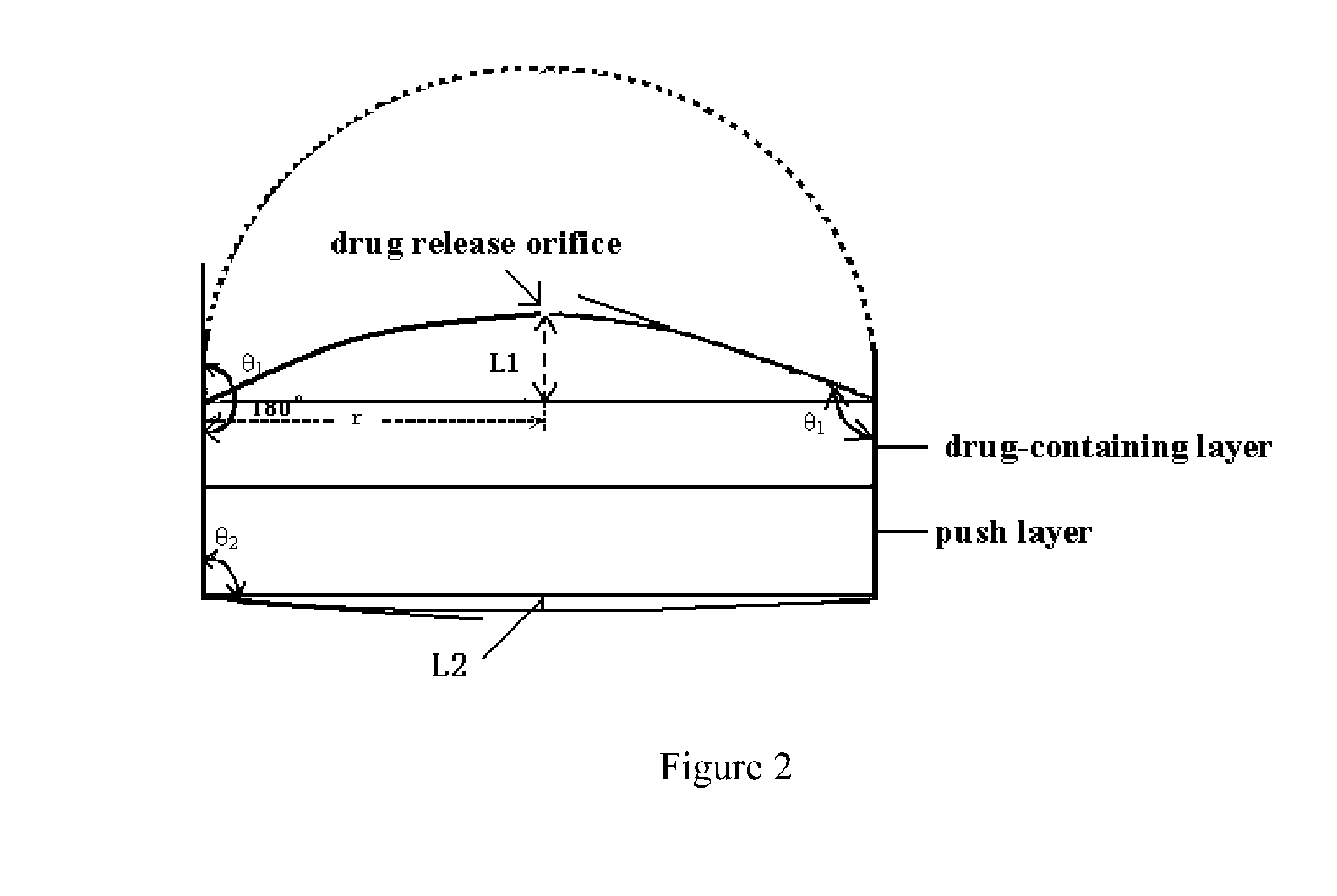Osmotic pump controlled release tablet and preparation method thereof
a technology of osmotic pump and controlled release, which is applied in the direction of pill delivery, medical preparations, pharmaceutical non-active ingredients, etc., can solve the problems of drug residue in the tablet core, drug residue in preparations, and application to water-insoluble drugs, so as to reduce the expansion force, avoid burst release and non-uniform release, and reduce the possibility of semi-permeable membrane ruptur
- Summary
- Abstract
- Description
- Claims
- Application Information
AI Technical Summary
Benefits of technology
Problems solved by technology
Method used
Image
Examples
example 1
Comparative studies on Felodipine Osmotic Pump Controlled Release Tablets
example 1a
Commercially Available Felodipine Controlled Release Tablets
[0063]Manufacturer: Hefei Cubic Pharmaceutical Company Limited[0064]Batch number: 070503
[0065]Specification: 5 mg The production date of this batch of commercially available Felodipine controlled release tablets was May, 2007.
Determination of Release:
[0066]The release was determined according to the procedure of Felodipine sustained-release tablet in the United States Pharmacopoeia USP30. Current release (2 months from the production date) and the release after being stored in natural conditions for 6 months, 12 months, and 24 months (all of the time points were calculated from the production date). The results were shown in Table 2:
TABLE 2the release of commercially available Felodipine controlled release tablets at different storage timesampling time (h)storage time2610limit specified in USP10-30%42-68% >75% 2 months15.8%64.5% 92.6% 6 months13.2%60.2% 83.5%12 months12.8%50.9% 72.1%24 months10.3%40.2% 64.5%
[0067]The experi...
example 1b
Felodipine Controlled Release Tablets Using Cellulose Acetate and Polyethylene Glycol (PEG) as Film-Forming Materials
[0068]1. Formula[0069]1.1 Formula for the tablet core (1000 tablets) is shown in Table 3.
TABLE 3Formula for the tablet core of Example 1B (1000 tablets)compositionamount usedthe drug-Felodipine 5 gcontaininglactose 60 glayersodium chloride100 gsodium dodecyl sulfate 15 gsodium carboxymethyl cellulose 20 gmicrocrystalline cellulose 10 g0.2% n-propyl gallate and 10% PVP q.s.K30 in 95% ethanolPVP K30 5 gmagnesium stearate 3 gthe push hypromellose K4M 60 glayermicrocrystalline cellulose 40 gsodium chloride 30 giron oxide red 0.5 g 8% PVP K30 in 70% ethanolq.s.PVP K30 5 gmagnesium stearate 1 g[0070]1.2 Composition of the coating solution: as shown in Table 4.
TABLE 4Formula for the coating solution in Example 1Bcompositionamount usedcellulose acetate12gpolyethylene glycol-60005gacetone700mlethanol250mlwater50ml[0071]2 Preparation process[0072]2.1 Preparation process of the ...
PUM
 Login to View More
Login to View More Abstract
Description
Claims
Application Information
 Login to View More
Login to View More - R&D
- Intellectual Property
- Life Sciences
- Materials
- Tech Scout
- Unparalleled Data Quality
- Higher Quality Content
- 60% Fewer Hallucinations
Browse by: Latest US Patents, China's latest patents, Technical Efficacy Thesaurus, Application Domain, Technology Topic, Popular Technical Reports.
© 2025 PatSnap. All rights reserved.Legal|Privacy policy|Modern Slavery Act Transparency Statement|Sitemap|About US| Contact US: help@patsnap.com



